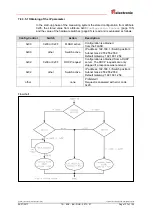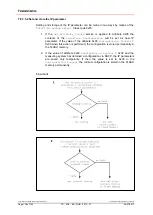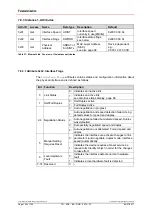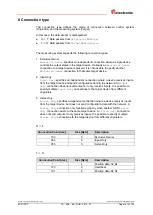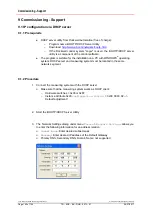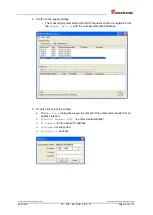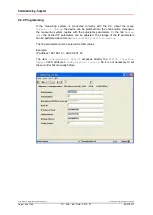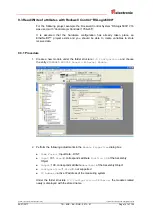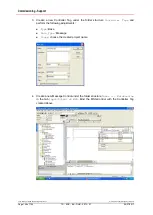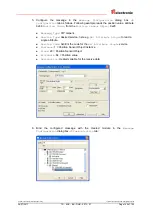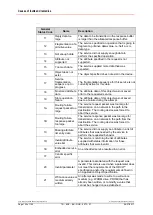
Printed in the Federal Republic of Germany
TR-Electronic GmbH 2008, All Rights Reserved
06/27/2017
TR - ECE - BA - DGB - 0073 - 07
Page 151 of 155
10.2 General Status Codes
The following table lists the Status Codes that may be present in the
General
Status Code
field of an
Error Response
message. The extended status code is
object specific and is defined under the respective object if the object supports further
extended status codes.
HEX notation
General
Status Code
Name
Description
00
Success
Service was successfully performed by the object
specified.
01
Connection failure
A connection related service failed along the
connection path.
02
Resource
unavailable
Resources needed for the object to perform the
requested service were unavailable.
03
Invalid parameter
value
See Status Code 0x20, which is the preferred
value to use for this condition.
04
Path segment error
The path segment identifier or the segment
syntax was not understood by the processing
node.
05
Path destination
unknown
The path is referencing an object class, instance
or structure element that is not known or is not
contained in the processing node.
06
Partial transfer
Only part of the expected data was transferred.
07
Connection lost
The messaging connection was lost.
08
Service not
supported
The requested service was not implemented or
was not defined for this Object Class/Instance.
09
Invalid attribute
value
Invalid attribute data detected.
0A
Attribute list error
An attribute in the
Get_Attribute_List
or
Set_Attribute_List
response has a non-zero
status.
0B
Already in
requested
mode/state
The object is already in the mode/state being
requested by the service.
0C
Object state
conflict
The object cannot perform the requested service
in its current mode/state.
0D
Object already
exists
The requested instance of object to be created
already exists.
0E
Attribute not
settable
A request to modify a non-modifiable attribute
was received.
0F
Privilege violation
A permission/privilege check failed.
10
Device state
conflict
The device’s current mode/state prohibits the
execution of the requested service.

